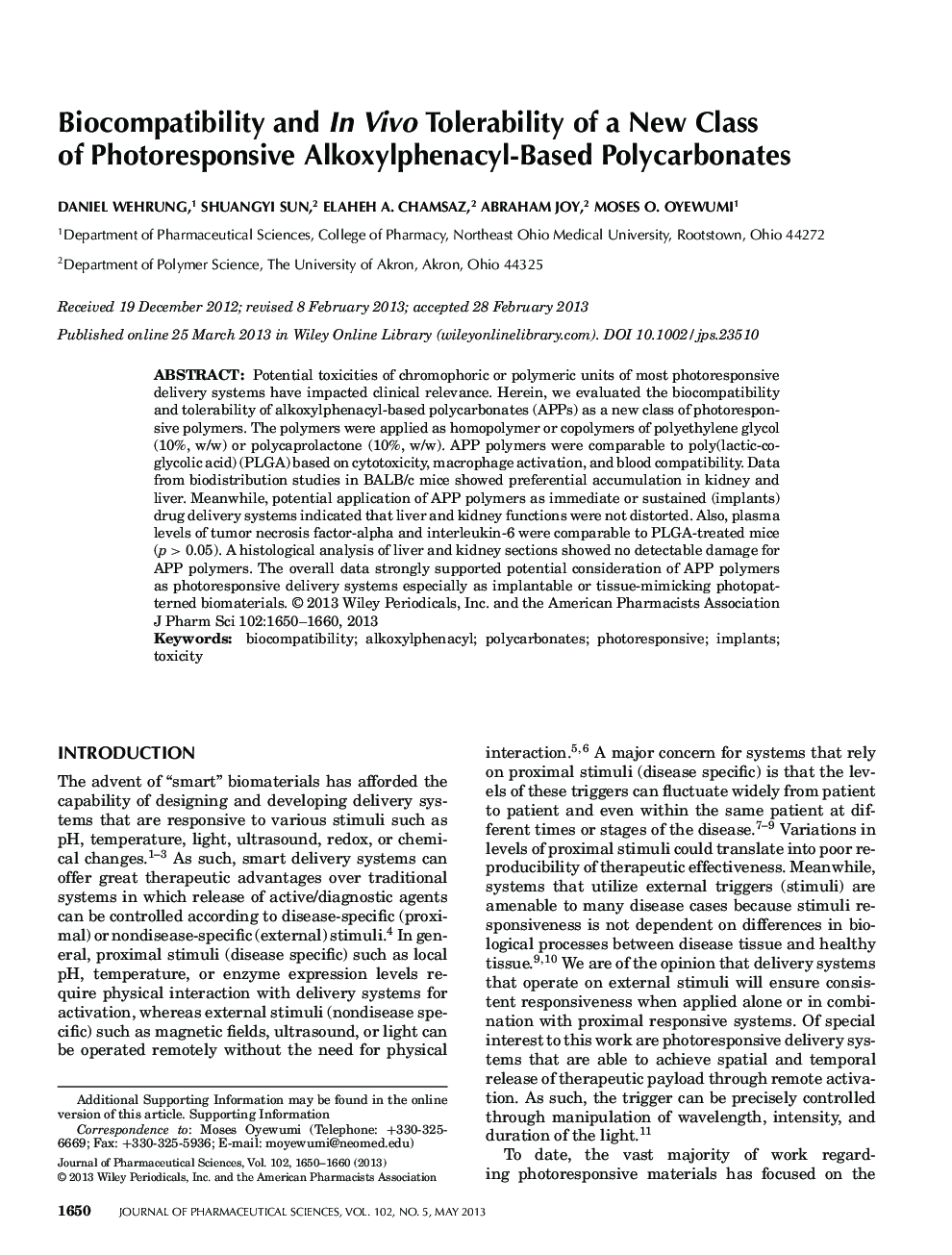| Article ID | Journal | Published Year | Pages | File Type |
|---|---|---|---|---|
| 2485379 | Journal of Pharmaceutical Sciences | 2013 | 11 Pages |
Abstract
Potential toxicities of chromophoric or polymeric units of most photoresponsive delivery systems have impacted clinical relevance. Herein, we evaluated the biocompatibility and tolerability of alkoxylphenacyl-based polycarbonates (APPs) as a new class of photoresponsive polymers. The polymers were applied as homopolymer or copolymers of polyethylene glycol (10%, w/w) or polycaprolactone (10%, w/w). APP polymers were comparable to poly(lactic-co-glycolic acid) (PLGA) based on cytotoxicity, macrophage activation, and blood compatibility. Data from biodistribution studies in BALB/c mice showed preferential accumulation in kidney and liver. Meanwhile, potential application of APP polymers as immediate or sustained (implants) drug delivery systems indicated that liver and kidney functions were not distorted. Also, plasma levels of tumor necrosis factor-alpha and interleukin-6 were comparable to PLGA-treated mice (p > 0.05). A histological analysis of liver and kidney sections showed no detectable damage for APP polymers. The overall data strongly supported potential consideration of APP polymers as photoresponsive delivery systems especially as implantable or tissue-mimicking photopatterned biomaterials.
Related Topics
Health Sciences
Pharmacology, Toxicology and Pharmaceutical Science
Drug Discovery
Authors
Daniel Wehrung, Shuangyi Sun, Elaheh A. Chamsaz, Abraham Joy, Moses O. Oyewumi,
